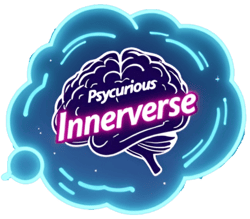Why Manifestation Doesn’t Work – And How to Fix It
We’ve all heard it: “Just think positive, and the universe will deliver.” But if manifestation is so simple, why does it often feel impossible? The truth is, manifestation isn’t magic—it’s a science-backed process that requires more than just wishful thinking.
1/16/20256 min read


Why Manifestation Doesn’t Work – And How to Fix It
We’ve all stumbled across the promise of manifestation: “Visualize what you want, and the universe will deliver.” But if the method were that simple, wouldn’t we all be living our dream lives by now? Instead, many of us find ourselves stuck—jotting down affirmations, pinning pictures to vision boards, and waiting for results that never quite materialize. As author and motivational speaker Mel Robbins insists, “Manifestation isn’t magic; it’s about taking action on what you truly want.”
In this expanded article, we’ll dive deeper than any short video can. We’ll examine why the manifestation process so often disappoints, how it can be rooted in cognitive and emotional pitfalls, and what a truly effective approach looks like—drawing on insights from neuroscience, psychology, and even spirituality.
1. What Is Manifestation, Really?
Manifestation has morphed into a buzzword, sometimes misconstrued as mere “positive thinking.” Yet leading voices, including Dr. Joe Dispenza, emphasize that genuine manifestation is less about daydreaming and more about aligning thoughts, emotions, and action toward a clear objective.
Psychology: From a psychological standpoint, manifestation taps into goal-setting theory. The more specific and emotionally resonant your goal, the more your brain is inclined to notice opportunities and solutions. This principle underlies many success frameworks, from corporate strategy sessions to sports performance.
Neuroscience: Research by neuroscientist Dr. Tara Swart shows that when you regularly visualize a goal, you activate the same neural circuits used when you actually accomplish it. This mental rehearsal primes you for success—yet it’s only half the story, as we’ll soon see.
Crucially, manifestation isn’t a substitute for action; it’s a framework to align your internal narrative with tangible efforts in the outside world.
2. Why Manifestation Feels So Hard
Despite its elegant premise, manifestation often falters. The culprit? Your subconscious mind. According to psychotherapist Marisa Peer, the beliefs you hold in your subconscious act like hidden anchors. You might consciously declare, “I want a fulfilling career,” but if your deeper belief whispers, “I’m unworthy of success,” you’ll sabotage yourself at every turn.
Common subconscious roadblocks include:
Limiting Beliefs
Phrases like “I’m not smart enough” or “I don’t deserve happiness” create an internal script that filters out opportunities.
Fear of Failure—or Success
Sometimes, you’re comfortable where you are, even if it’s not ideal. Success brings change, and that change can be scary.
Perfectionism
An all-or-nothing mindset causes you to give up at the first sign of imperfection.
This gap between what you say you want and what you actually believe underscores why manifestation so often stops at the wishful-thinking phase. Addressing this internal conflict is key to unlocking its potential.
3. The Neuroscience of Visualization (and Action)
Manifestation draws on a potent fusion of visualization and behavioral activation. To break it down:
Visualization
When you vividly imagine an outcome—be it a new home, a dream job, or improved health—your brain lights up in much the same way it would if you were living that experience. This process is akin to “mental rehearsal,” a concept widely adopted by Olympic athletes to refine technique and boost confidence.
Action
This is where many fail. As Dr. Tara Swart emphasizes, “Visualizing the finish line is the first step, but you won’t cross it without moving your legs.” Whether it’s networking for a new job or committing extra time to personal development, action cements the neural pathways visualization helps establish.
In short, see it—then do it. Your brain becomes attuned to spotting relevant opportunities, making manifestation more than mere wishful thinking.
4. Common Manifestation Mistakes
Ever wonder why some people claim manifestation is life-changing while others find it useless? The difference often lies in avoiding these pitfalls:
Focusing on the How Instead of the Why
Gabrielle Bernstein, in her teachings, stresses the importance of a meaningful why. If you’re obsessed with how you’ll get that promotion or when you’ll meet that special someone, you’re likely to drown in anxiety. By contrast, when you hone in on why these goals matter—be it personal growth, service to others, or self-actualization—you embed a deeper emotional anchor that guides your actions.Setting Unclear Intentions
Vague desires yield vague results. Instead of “I want more money,” consider “I want to earn an extra $1,000 a month to invest in my art projects.” Specificity doesn’t just help the universe (metaphorically speaking); it orients your brain toward concrete solutions.Ignoring Emotional Alignment
Manifestation also hinges on emotional states. If you visualize success while secretly feeling dread, your contradictory signals undermine your progress. According to Dr. Joe Dispenza, maintaining elevated emotions—like gratitude or excitement—creates a neurochemical environment where your goals feel both compelling and achievable.
5. A Practical Manifestation Formula
Clarity, emotion, action, and trust—these four pillars construct a solid manifestation framework. As motivational speaker Les Brown puts it: “You don’t get what you want; you get who you are.” Let’s dissect this:
Clarify Your Desire
Write it down. The more precise, the better. Identify why it matters, tapping into personal values and aspirations.
Feel It
“Act as if.” Visualize the outcome in vivid detail—how it looks, sounds, and feels. Embody that version of yourself.
Take Inspired Action
Break your main goal into smaller tasks. If your dream is to become a writer, start by writing a single page daily.
Let Go
“Let go” doesn’t mean giving up; it means trusting the process. Think of it like planting a seed. You water it and make sure it gets sunlight, but you don’t keep digging it up every hour to see if it’s sprouting yet.
6. The Hidden Power of Resistance
At times, you’ll face obstacles that seem insurmountable—missed opportunities, rejections, or self-sabotage. Author Steven Pressfield, in The War of Art, labels these blocks as “Resistance.” Rather than a stop sign, he views resistance as a compass: it often points directly to what matters most. If you feel intense fear about a goal, it’s likely that goal is tied to your deepest passions.
Addressing resistance means dissecting your fears:
Are you afraid of public judgment?
Worried you’re not “good enough”?
Concerned about the responsibilities success might bring?
Once you name these fears, you can strategize solutions—like skill-building, seeking mentorship, or adjusting your pace to avoid burnout.
7. When Science Meets Mysticism
Manifestation uniquely blends hard science with spiritual philosophy. From a neuroscientific perspective, your thoughts don’t magically alter the fabric of reality. Rather, they sharpen your perception, increase your focus, and motivate consistent action. Spiritually, thinkers like Dr. Bruce Lipton (author of The Biology of Belief) argue that consciousness and energy also play roles in shaping outcomes—a concept many call the “law of attraction.”
Bridging these viewpoints:
Neuroscience emphasizes how repeated thoughts shape brain wiring, ultimately influencing behavior and outcomes.
Spirituality suggests these intentions may interact with a universal field of potential, as also posited by quantum theoreticians exploring the role of observers in reality formation.
Regardless of how you reconcile these perspectives, the synergy of clarity, belief, and dedicated effort remains a common denominator.
8. Conclusion: Changing the Manifestation Game
Manifestation doesn’t have to be a cosmic mystery. It’s a practice that blends psychological insight, neuroscientific evidence, and even spiritual principles. The real stumbling block isn’t that manifestation “doesn’t work”—it’s that many approach it as a passive wish list rather than a dynamic roadmap to action.
Reevaluating your approach could mean the difference between watching your vision board gather dust and seeing genuine transformation. The next time you feel like giving up, remember the words of Rhonda Byrne, author of The Secret: “The universe responds to who you believe you are.” If self-doubt weighs you down, take time to unpack those hidden beliefs. Turn your limiting scripts into constructive affirmations, then follow through with consistent, heartfelt effort.
Key Takeaways to Make Manifestation Work
Address Subconscious Beliefs: Identify and rewire the negative scripts that conflict with your conscious goals.
Find Emotional Alignment: Your heart and mind should speak the same language. Cultivate elevated emotions that pair with clear intentions.
Break It Down: Dissect big dreams into smaller steps, rewarding yourself for progress.
Embrace Resistance: Fear often signals what you genuinely care about. Lean into discomfort—it’s a map, not a barrier.
Stay Consistent: A single burst of visualization isn’t enough. Integrate reflection, goal-setting, and action into your daily routine.
Ultimately, manifestation is about bridging the gap between your inner world and real-world outcomes. It’s a process of becoming the person you need to be to experience the life you desire. That requires patience, humility, and a willingness to face fears head-on. Yet, the journey can be deeply rewarding, unveiling strengths and possibilities you might never have imagined.
So, rather than dismiss manifestation as wishful thinking or chasing it as a quick fix, recognize it as a powerful toolkit that unites mind, heart, and action. In harnessing that synergy, you’ll discover that “impossible” goals can become part of your everyday reality—one confident step at a time.
Further Reading & References
Mel Robbins – The 5 Second Rule: https://amzn.to/3Wm1TtI
Dr. Joe Dispenza – Breaking the Habit of Being Yourself https://amzn.to/3Wm3K1H
Marisa Peer – I am Enough https://amzn.to/40znhyj
Dr. Tara Swart – Research on how visualizing goals activates neural circuits, priming the brain for success.
Gabrielle Bernstein – Super Attractor: https://amzn.to/4jkGLOI
Les Brown – You don’t get what you want, you get who you are.
Steven Pressfield - The War of Art – https://amzn.to/4fVGH4Y
Dr. Bruce Lipton – The Biology of Belief: https://amzn.to/4gNusZr
Rhonda Byrne, The Secret – https://amzn.to/40AZDS4
Liked This Article?
Share it with someone who might be wrestling with their own manifestation journey.
Comment with insights or experiences you’ve had while trying to bring your dreams to life.
Subscribe to Psycurious Innerverse for more deep dives into psychology, neuroscience, and the limitless potential of the human mind. [https://www.youtube.com/@PsycuriousInnerverse]
